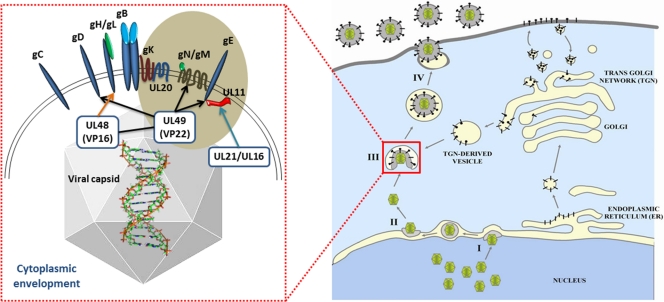Fig 6.
Diagrammatic description of glycoprotein-tegument protein interactions during cytoplasmic virion envelopment at TGN-derived vesicles. (Right) The different steps in virion egress from infected cells: I, budding of nuclear capsids into perinuclear spaces; II, deenvelopment at the outer nuclear membrane and release of capsids into cytoplasm; III, secondary envelopment at TGN membranes; IV, extracellular transport of enveloped virions. Glycoproteins are shown as black bars being synthesized in the endoplasmic reticulum and transported via vesicles to the Golgi apparatus and expressed on infected cell surfaces. (Left) Interactions of tegumented capsids with the carboxyl termini of glycoproteins and membrane proteins: UL49 (VP22) is shown to interact with gD, gM, and gE; UL48 (VP16) interacts with gH and VP22; UL21 and UL16 interact with UL11 (reviewed in references 32 and 42). UL20, UL11, gK, gM, and gE are shown within a brown sphere to highlight their potential cooperative relationships in infectious virion morphogenesis.

